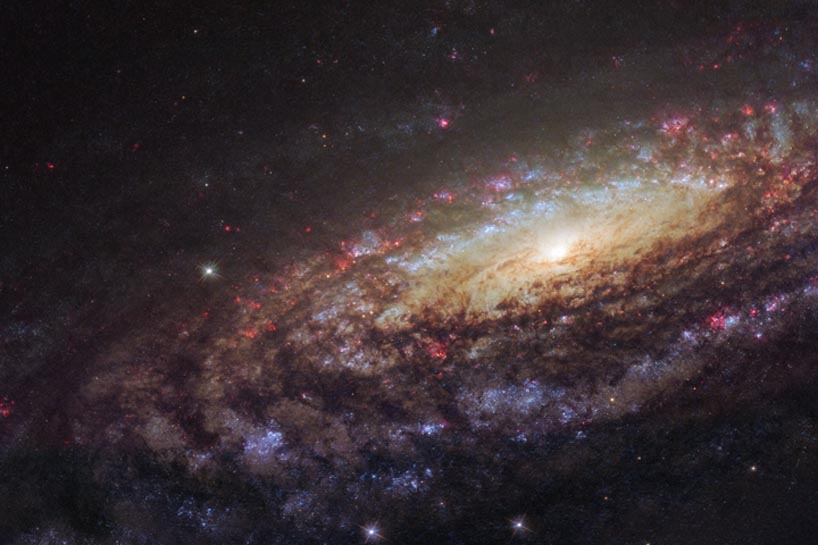
Spiral galaxy
Pegasus
45 million light years
10.4
2.68 x 2.01 arcminutes
North is 56.3° right of vertical
ESA/Hubble & NASA/D. Milisavljevic (Purdue University)
January 29, 2018
ABOUT THIS IMAGE:
This NASA/ESA Hubble Space Telescope image shows a spiral galaxy known as NGC 7331. First spotted by the prolific galaxy hunter William Herschel on September 6, 1784, NGC 7331 is located about 45 million light-years away in the constellation of Pegasus (The Winged Horse). Facing us partially edge-on, the galaxy showcases it's beautiful arms which swirl like a whirlpool around its bright central region.
Astronomers took this image using Hubble's Wide Field Camera 3 (WFC3), as they were observing an extraordinary exploding star - a supernova - which can still be faintly seen as a tiny red dot near the galaxy's central yellow core. Named SN2014C, it rapidly evolved from a supernova containing very little Hydrogen to one that is Hydrogen-rich - in just one year. This rarely observed metamorphosis was luminous at high energies and provides unique insight into the poorly understood final phases of massive stars.
NGC 7331 is similar in size, shape, and mass to the Milky Way. It also has a comparable star formation rate, hosts a similar number of stars, has a central supermassive black hole and comparable spiral arms. The primary difference between our galaxies is that NGC 7331 is an unbarred spiral galaxy - it lacks a "bar" of stars, gas and dust cutting through its nucleus, as we see in the Milky Way. Its central bulge also displays a quirky and unusual rotation pattern, spinning in the opposite direction to the galactic disc itself.
By studying similar galaxies we hold a scientific mirror up to our own, allowing us to build a better understanding of our galactic environment which we cannot always observe, and of galactic behavior and evolution as a whole.
From Wikipedia:
NGC 7331 (also known as Caldwell 30) is a unbarred spiral galaxy about 40 million light-years (12 Mpc) away in the constellation Pegasus. It was discovered by William Herschel in 1784. NGC 7331 is the brightest member of the NGC 7331 Group of galaxies. The other members of the group are the lenticular or unbarred spirals NGC 7335 and 7336, the barred spiral galaxy NGC 7337 and the elliptical galaxy NGC 7340. These galaxies lie at distances of approximately 332, 365, 348 and 294 million light years, respectively. In both visible light and infrared photos of the NGC 7331, the core of the galaxy appears to be slightly off-center, with one side of the disk appearing to extend further away from the core than the opposite side.
The
galaxy is similar in size and structure to the Milky Way, and is often
referred to as "the Milky Way's twin". However, discoveries
in the 2000s regarding the structure of the Milky Way may call this similarity
into doubt, particularly because the latter is now believed to be a barred
spiral, compared to the unbarred status of NGC 7331.